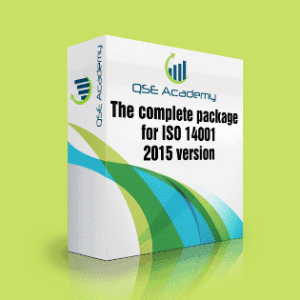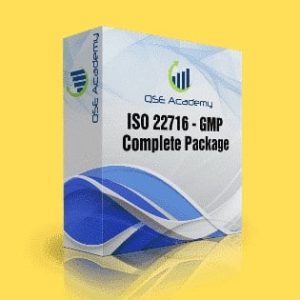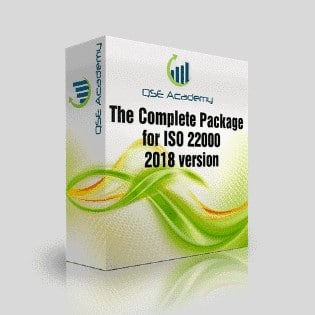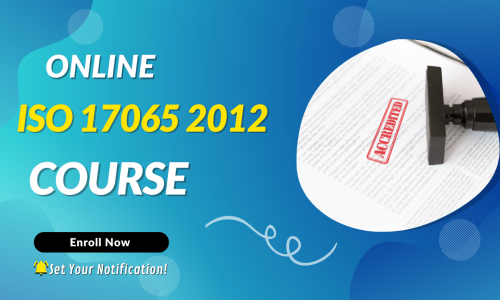Define Quality: What It Really Means and Why It Matters

Define Quality: What It Really Means and Why It Matters
Last Updated on June 24, 2025 by Hafsa J.
Define Quality: What It Really Means and Why It Matters
To define quality is to answer a deceptively simple question: what makes a product, service, or process truly “good”?
At its core, quality means meeting a specific standard or expectation—but that standard can vary depending on who’s asking. A customer might define quality as ease of use. A manufacturer might focus on precision and durability. And a food safety expert might define quality as compliance with hygiene and traceability regulations. That’s why the first step to delivering value is to clearly define quality in your context.
This matters more than ever. Without a shared definition, businesses drift into vague promises, inconsistent results, and poor customer trust. When we define quality properly, we:
-
Align teams across functions
-
Set measurable goals
-
Reduce errors and complaints
-
Build strong reputations that last
Whether you’re applying ISO standards, improving a process, or simply trying to explain what makes your work excellent, taking the time to define quality is not a box to tick—it’s the foundation of performance and credibility.
In this article, we’ll go straight to the point. We’ll define quality from technical, operational, and human angles, breaking it down so it’s crystal clear—and useful.
Define Quality: The Roots of the Term
Before we can use the word confidently in business, production, or service delivery, we need to go back and define quality from its original sources. This helps strip away the buzzword effect and return to clarity.
Where the Term “Quality” Comes From
The word “quality” has deep roots in Latin. It comes from qualitas, which referred to the nature or character of something. Originally, it had nothing to do with excellence—it simply meant what kind of thing something is.
Over time, especially during the industrial era, the need to define quality evolved into something more practical: how well a product or service matches a desired standard. In manufacturing, this meant precise measurements, reliable materials, and fewer defects. In services, it became about consistency, speed, and user satisfaction.
How ISO Defines Quality
In modern professional settings, the most authoritative answer to “how do you define quality?” comes from ISO 9000:2015. According to this standard:
Quality is the degree to which a set of inherent characteristics fulfills requirements.
Let’s break that down simply:
-
“Inherent characteristics” refers to the natural features or attributes of a product or service.
-
“Fulfills requirements” means it meets what was promised or needed—whether stated by a customer, a regulation, or an internal goal.
So, to define quality in ISO terms is not about being the best or most expensive. It’s about consistently delivering what’s expected.
Why These Definitions Still Matter Today
Many businesses skip this step. They assume everyone has the same idea of what “quality” means. But when different teams use the word without a shared definition, results suffer. That’s why it’s critical to define quality clearly from the start:
-
In internal systems, so that teams work toward the same benchmarks
-
In client communications, to avoid mismatched expectations
-
In audits and certifications, where “quality” must be backed by evidence
Understanding where the term comes from—and how ISO standards anchor it—helps us use it with precision and confidence in today’s context.
Define Quality in a Modern Context
Now that we’ve covered the historical and technical roots, let’s bring it into today’s world. To define quality in a modern context means understanding how expectations have expanded. It’s no longer just about avoiding defects—it’s about the overall experience and value delivered.
Three Core Ways to Define Quality Today
When we look at real-world applications, most definitions of quality fall into one or more of these three dimensions:
-
Conformance to Requirements
This is the traditional, ISO-based way to define quality—does the product or service meet the set criteria? For example, a food item meeting all safety and labeling requirements passes the quality test. -
Fitness for Use
Even if something meets technical standards, it must also serve the user’s actual needs. A perfectly produced tool that’s uncomfortable to use still fails to deliver true quality. So, to define quality here is to ask: Does it actually work for the person using it? -
Customer Satisfaction
This angle puts perception at the center. If a customer feels let down—even by something that technically meets standards—quality is compromised. This is especially important in service-based industries where emotional response shapes perceived value.
Why the Definition Has Evolved
In a world of instant reviews and rising expectations, businesses can’t afford to work with a narrow definition. To survive and grow, they need to define quality in broader terms—combining compliance, usability, and satisfaction.
Ignoring any one of these angles leads to blind spots. You might think your process is flawless, but if users find it frustrating or irrelevant, your definition of quality is incomplete.
The takeaway? If you want your team, product, or service to be truly effective, you must define quality in a way that reflects how people actually experience it—not just how it’s measured on paper.
Define Quality Across Different Sectors
The way we define quality shifts depending on the industry. What counts as “quality” in one field might be irrelevant—or even risky—in another. That’s why it’s essential to tailor your definition to the specific environment you’re operating in.
In Manufacturing and Engineering
Here, to define quality means strict compliance with specifications, tolerances, and performance standards. A part is either within limits or it’s not. Precision matters. A tiny variation could mean failure in machinery or safety risk in consumer goods.
For example:
-
A screw that’s 0.1 mm too short fails the quality test.
-
A machine that overheats under standard operating conditions doesn’t meet quality expectations—even if it’s otherwise functional.
In Service Industries
In services, you can’t measure quality with a caliper. Instead, you define quality based on consistency, responsiveness, and client perception. A quality customer experience means:
-
Clear communication
-
Timely responses
-
Delivering what was promised
A helpful employee who solves a client’s problem quickly is often a better indicator of service quality than any process manual.
In Food and Health Sectors
To define quality in food or health industries means ensuring safety, traceability, and compliance with strict regulations. It’s not just about taste or appearance—it’s about whether the product:
-
Meets hygiene standards
-
Avoids contamination
-
Follows protocols like HACCP or ISO 22000
Even a visually perfect product fails the quality test if it poses health risks or lacks documentation.
Misconceptions That Distort How We Define Quality
Even when teams try to do things right, they often fall into traps because they haven’t taken the time to define quality properly. Misconceptions create confusion, waste time, and damage trust.
“High-End” Doesn’t Always Mean High-Quality
One of the most common mistakes is assuming that expensive equals quality. But if a luxury product doesn’t meet user needs, or breaks down quickly, can we really define quality by its price tag?
-
A high-end watch that loses time is not a quality watch.
-
A premium consulting service that overpromises and underdelivers fails the quality test.
To define quality only by cost or prestige is to ignore the core question: does it perform as expected, reliably and consistently?
Confusing Looks with Quality
Another distortion happens when appearance is mistaken for quality. Sleek packaging, a modern interface, or stylish branding can create a feeling of quality—but feelings aren’t enough.
-
A website might look elegant but crash frequently.
-
A product may feel luxurious but lack durability.
To define quality, we have to go deeper than the surface. Real quality is verified, not just perceived.
Define Quality in Management Systems
In professional settings, especially those governed by standards like ISO 9001, it’s not enough to aim for quality—you need to define quality in a way that can be measured, managed, and improved. That’s where quality management systems come in.
Using Quality Objectives to Define Quality Clearly
One of the most practical ways to define quality inside an organization is through clear, structured quality objectives. These are not vague slogans like “be the best”—they are specific, measurable targets.
For example:
-
“Reduce product defects by 20% over the next 6 months”
-
“Achieve 95% on-time delivery rate this quarter”
When quality objectives are clear, they do two things:
-
Provide a working definition of what “quality” means here and now
-
Align teams around concrete, trackable results
Quality Policy: More Than a Poster on the Wall
A quality policy is another critical tool to define quality within your system. It’s meant to guide decisions, support compliance, and show stakeholders what you stand for. But too often, it’s just a formal document no one reads.
A strong quality policy:
-
Links directly to customer expectations and business strategy
-
Uses language that staff actually understand and apply
-
Reinforces how you define quality at every level
How to Define Quality for Your Organization
If you want consistency, credibility, and control, you need to define quality in a way that’s specific to your business—not borrowed from general templates or vague ideals. This isn’t just for large corporations. Small teams, consultants, service providers, and factories all need a clear definition of what “good” really means.
A Step-by-Step Framework
Here’s a practical method to define quality that works across industries:
-
Identify Your Key Stakeholders
Who are you delivering value to? Clients, regulators, end users? Each group may have different quality expectations. -
Clarify Requirements and Expectations
Gather the formal and informal expectations—standards, legal obligations, client requests, and even cultural expectations. -
Translate Those Into Measurable Criteria
Don’t stop at “good” or “satisfying.” To define quality, list exact indicators:
- Delivery times
- Tolerance ranges
- Error rates
- Cleanliness levels
- User feedback scores
-
Document It Clearly
Put it into your procedures, training materials, and dashboards. Everyone on the team should know how you define quality, not just management. -
Review and Update Regularly
Quality is not static. As expectations change, your definition should evolve too. Schedule periodic reviews to keep it relevant.
Why You Must Clearly Define Quality
Too many organizations run into issues not because their teams are careless, but because no one ever took the time to define quality in the first place. When “quality” means something different to each department, misalignment is inevitable—and costly.
Alignment Brings Clarity
When you clearly define quality, everyone—from procurement to production to customer service—is working toward the same goals. There’s no confusion about what’s acceptable and what’s not. This alignment:
-
Speeds up decision-making
-
Reduces internal conflict
-
Strengthens your ability to scale
Avoid Costly Misunderstandings
Without a clear definition, people make assumptions. A product that meets engineering specs may still fail in the field if the client’s needs weren’t understood. To prevent this, teams must define quality early, not after complaints start rolling in.
Improvement Starts With Definition
You can’t improve what you haven’t defined. Vague goals like “better quality next year” don’t lead to action. But when you define quality with measurable criteria, you can track, analyze, and improve over time.
Define Quality to Build Trust and Competitive Advantage
In today’s market, where customers have more options and higher expectations than ever, how you define quality can become a serious competitive edge. It’s not just about meeting standards—it’s about showing your audience that you know what matters, and you can deliver it every time.
Quality Builds Confidence
When clients and partners see that you’ve taken the time to define quality clearly—and that your processes reflect that definition—they’re more likely to trust you. Trust leads to repeat business, stronger partnerships, and better word-of-mouth.
-
A supplier who delivers the right product, at the right time, in the right condition, has clearly defined and upheld quality.
-
A consultant who adapts methods to client needs while maintaining consistent results shows they’ve taken time to define quality in context.
Stand Out in a Crowded Market
Many businesses claim to offer “high quality,” but very few can explain what that actually means. When you can define quality in specific, operational terms—and back it with proof—you immediately stand apart.
Conclusion: Define Quality Before You Try to Deliver It
Let’s be clear—if you don’t take time to define quality, you’re leaving your reputation, your results, and your relationships to chance.
Throughout this article, we’ve seen that to define quality is not about using fancy language or vague promises. It’s about being precise. Whether through standards, measurable objectives, or simple team alignment, a clear definition creates structure, trust, and improvement.
So, before launching your next product, service, or internal process—pause and ask: Have we taken the time to really define quality here? If the answer is no, that’s your next step.
Because in every industry, in every system, and in every client interaction, your ability to define quality clearly will shape everything that follows.
I hold a Master’s degree in Quality Management, and I’ve built my career specializing in the ISO/IEC 17000 series standards, including ISO/IEC 17025, ISO 15189, ISO/IEC 17020, and ISO/IEC 17065. My background includes hands-on experience in accreditation preparation, documentation development, and internal auditing for laboratories and certification bodies. I’ve worked closely with teams in testing, calibration, inspection, and medical laboratories, helping them achieve and maintain compliance with international accreditation requirements. I’ve also received professional training in internal audits for ISO/IEC 17025 and ISO 15189, with practical involvement in managing nonconformities, improving quality systems, and aligning operations with standard requirements. At QSE Academy, I contribute technical content that turns complex accreditation standards into practical, step-by-step guidance for labs and assessors around the world. I’m passionate about supporting quality-driven organizations and making the path to accreditation clear, structured, and achievable.
Related Posts
Compliance Management : A Simple Guide
Certificate of Conformance: What It Is and When You Need One
ISO Awareness Training: What You Need to Know
Popular tags
Recent Posts
Subscribe on YouTube
Product tags
Popular Courses
















